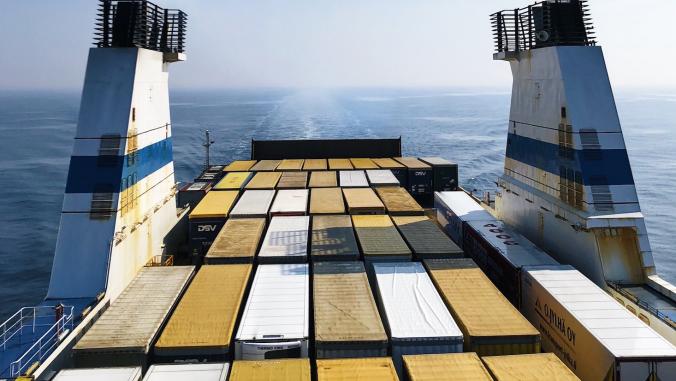What Happens When Old Computers Die?
So your company certifies that its e-waste is responsibly recycled; what happens next to ensure the toxic components don't end up polluting the environment and your private data doesn't end up polluting your company's brand?

So, you've read that over half of electronic waste in the E.U. ends up at substandard treatment facilities and have decided to make sure your old computer goes direct to an authorized e-waste handler. But what happens next to ensure the toxic components don't end up polluting the environment and your private data doesn't end up polluting your company's brand? And, more importantly, why should you care?
Well, around 1,500 PCs, laptops, monitors and servers a day -- including those handled through IT giant Dell's takeback scheme -- make their way to an industrial estate on the outskirts of Staines, where they are delivered to a warehouse surrounded by a Fort Knox-style metal fence.
"Sorry about the fence," says the receptionist, unlocking the gate at the side of the building. "But some of our larger government clients insist on some pretty high levels of security. Can I see some photo ID?"
The fence is to protect the 150,000 pieces of discarded IT equipment that pass through the processing plant of e-waste management firm Dataserv each year, many of which contain highly sensitive data that could cause major headaches to a raft of public sector and blue chip organizations if it ever saw the light of day.
"The prime reason people turn to this type of facility is self-protection," explains Neal Saunders, managing director of Dataserv. "We are in effect an assurance company -- we offer them assurance that there is not going to be comeback from disposing of their IT equipment, that their data is properly wiped and their machine isn't going to end up on the side of the road in Africa."
The scale of this assurance is underlined by the first part of the process greeting those machines that find their way to Staines.
Upon arrival, each unit is assigned a barcode to ensure that an electronic audit trail tracks their every move through every stage of the refurbishment and recycling process. They are then linked up to a server running data wiping software from Finnish firm Blancco that repeatedly overwrites the hard drive with random digital patterns until it is clean.
On the occasions where this process fails and there is a risk that data remains on the hard drive, it is removed from the machine and "degaussed" using electromagnetics, before being physically crushed and sent to a shredding machine that cuts the drives down to pieces of less than 25mm squared. "That leaves us with a mixture of alloys that are sent for resmelting and then resold on the raw materials market," explains Saunders.
Meanwhile, those machines with their now-blank hard drives still intact are tested and refurbished ready for a new life.
It is at this point that those organizations handing their IT kit over to Dataserv have a decision to make, according to Jean Cox-Kearns, senior takeback and recycling manager for Dell in Europe, the Middle East and Africa. "You can choose to have the machine resold and get some financial value back from it, you can donate it to a charity, you can reposition it within your own organization, which is happening more and more, or you can send it to be recycled," she explains.
The decision remains something of a vexed one for many environmentally conscious organizations. As Saunders notes, the donation or sale of properly refurbished PCs to users in the developing world not only helps aid development and close the "digital divide," it is also better from an environmental perspective as it ensures machines are used for their full working life.
But there are also no guarantees that the machines will be disposed of in an environmentally responsible manner when they do eventually come to their end of life. "A lot of developing economies simply do not have the facilities yet to recycle the machines," admits Saunders. "But that does not necessarily mean they should not be allowed to use them."
The alternative is to reuse the machines yourself, which is arguably the most cost-effective option, or have them recycled within the E.U., at which point they enter into a genuinely remarkable process that could result in the raw materials in your PC ending up as jewelry.
Around 20 to 25 per cent of the machines processed at Dataserv's Staines facility are sent to a separate site in Gloucestershire where they enter into a laborious recycling process. "At the end of the day we are trying to break these complex machines down to the elements in the periodic table that make them," explains Saunders. "It's at that point that we can sell them on the raw materials market, where they could end up being used for anything."
The first stage is to pre-dismantle the machines -- a task that Saunders claims has become easier in recent years as manufacturers have begun to design machines that are easier to recycle -- and then separate out the plastics, ferrous metals, alloys, printed circuit boards and batteries.
The ferrous metals are immediately shredded and then sold into the raw materials market, where they could one day be used to make another computer, while the alloys are similarly shredded smelted and then resold.
The printed circuit boards are more problematic, according to Saunders, and have to be put through a sealed process to recover the copper and small quantities of gold that feature on the boards -- hence the admittedly small possibility that part of your old computer ends up in someone's jewelry box.
Meanwhile, the batteries are sent to a facility in Germany where a pyrometallurgical distillation process is used to separate out metals such as nickel and cadmium with the residual chemicals being disposed of in accordance with chemical waste regulations.
This literal boiling down of computers to their original raw materials is in many ways the only long-term answer to the problems presented by e-waste and could also prove essential to the long-term future of an IT industry that is increasingly concerned about dwindling supplies of some of the rare metals it relies on.
"Raw material scarcity is a genuine concern for the industry," admits Cox-Kearns. "So there is a real desire to recapture as much as we can from old machines."
Photo composite includes CC-licensed Flickr photo by Madasor.





